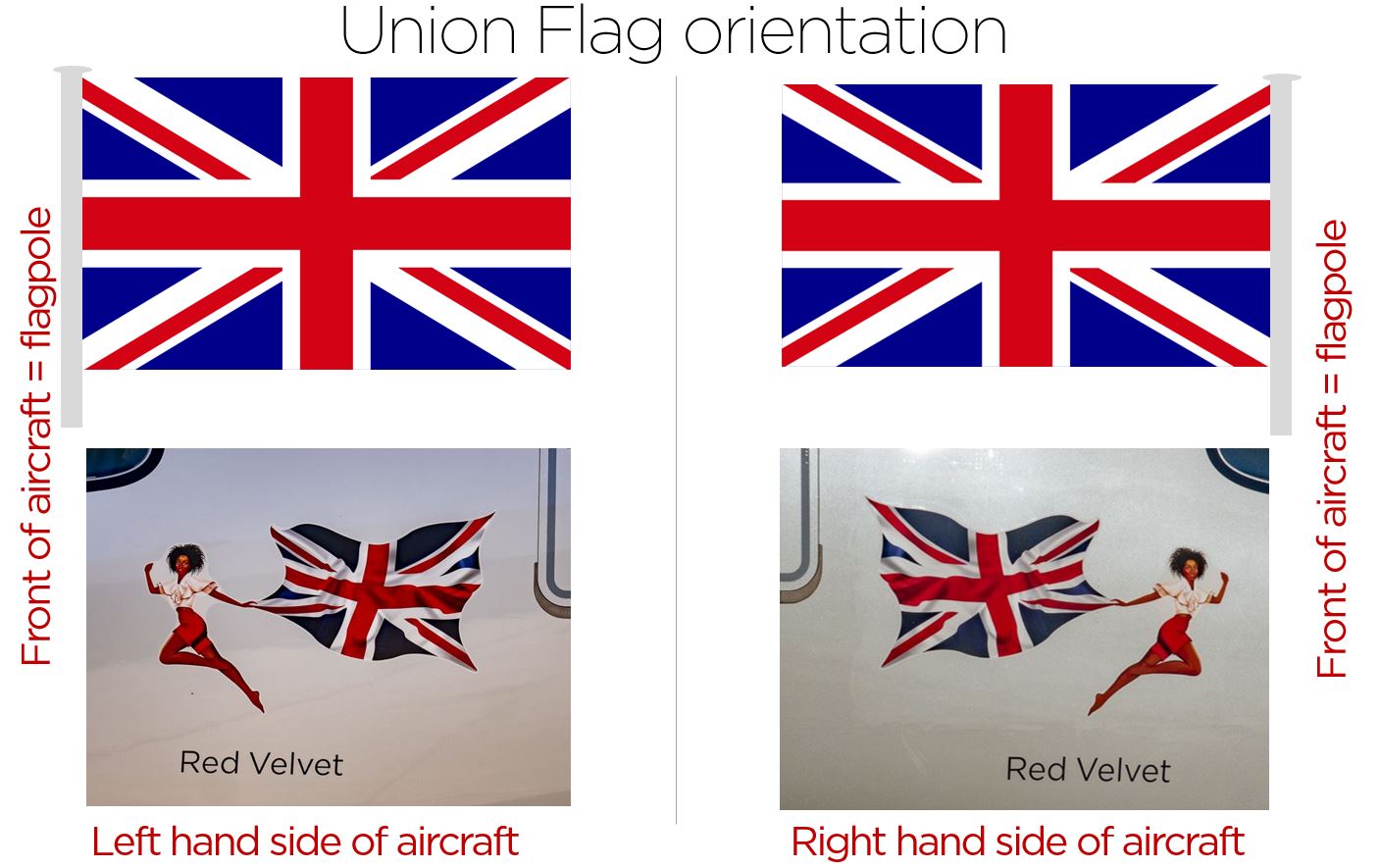“When a flag is placed on an aircraft or ship, the nose/bow is designated as the flagpole. So the left hand side appears as we’re used to seeing it, but the right hand side is often questioned.
“We have installed the right hand flag using the flag pole method, so that the rule is upheld. This is in line with the flag protocol as outlined by the Flag Institute, who say that: ‘When flags are painted onto a vehicle, or on the tail fin of an aircraft, the flag on the port side should show the obverse of the flag (ie. the flagpole on the left), while that on the starboard side should show the reverse (ie. the flagpole on the right).”


